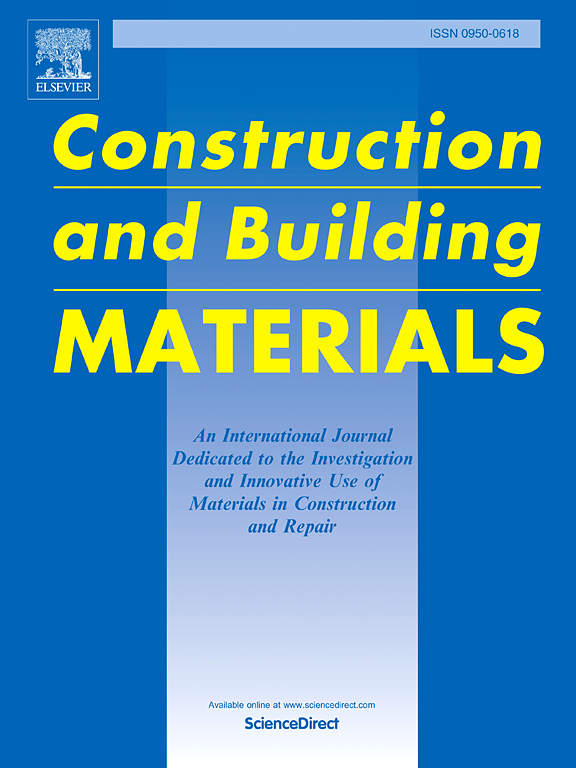Effects of sintered secondary aluminum ash grinding fine power on the properties of modified magnesium oxysulfate cement-based materials
IF 7.4
1区 工程技术
Q1 CONSTRUCTION & BUILDING TECHNOLOGY
引用次数: 0
Abstract
To reduce the production costs of modified magnesium oxysulfate (MMOS) cement-based materials and realize the reutilize of secondary aluminum ash, this study investigated the effects of grinding fine powder derived from sintered secondary aluminum ash (DF) on the workability, mechanical properties, and shrinkage characteristics of MMOS cement-based materials. Various techniques including XRD, SEM, FTIR, TG, ICP, MIP, and hydration heat test were employed to analyze the mechanism. The results indicate that increasing DF content notably enhances the fluidity and reduces shrinkage of MMOS cement-based materials, while mechanical properties generally decrease. However, the decline in mechanical properties becomes negligible when DF content is below 10 %. Enhanced workability and reduced shrinkage deformation were observed at high water-to-binder ratios, whereas superior mechanical properties were evident at low ratios. Microscopic analysis revealed that excessive DF content delays the hydration process, reducing the formation rate of hydration products such as Mg(OH)2 and 5·1·7 phase, enhances the workability and inhibits the shrinkage deformation of MMOS cement-based materials but is not conducive to early-stage mechanical properties. In the later stages of hydration, residual MgO in MMOS cement forms a dense structure interconnected with 5·1·7 phase crystals, enhancing mechanical properties. The cement shows low levels of heavy metals and harmful substances, all below regulatory limits, while leaching concentrations of heavy metals in untreated raw materials exceed standard requirements. This research supports the environmentally safe treatment and resource utilization of secondary aluminum ash.
求助全文
约1分钟内获得全文
求助全文
来源期刊

Construction and Building Materials
工程技术-材料科学:综合
CiteScore
13.80
自引率
21.60%
发文量
3632
审稿时长
82 days
期刊介绍:
Construction and Building Materials offers an international platform for sharing innovative and original research and development in the realm of construction and building materials, along with their practical applications in new projects and repair practices. The journal publishes a diverse array of pioneering research and application papers, detailing laboratory investigations and, to a limited extent, numerical analyses or reports on full-scale projects. Multi-part papers are discouraged.
Additionally, Construction and Building Materials features comprehensive case studies and insightful review articles that contribute to new insights in the field. Our focus is on papers related to construction materials, excluding those on structural engineering, geotechnics, and unbound highway layers. Covered materials and technologies encompass cement, concrete reinforcement, bricks and mortars, additives, corrosion technology, ceramics, timber, steel, polymers, glass fibers, recycled materials, bamboo, rammed earth, non-conventional building materials, bituminous materials, and applications in railway materials.
 求助内容:
求助内容: 应助结果提醒方式:
应助结果提醒方式:


